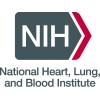
Sildenafil to Treat HIV-Associated Pulmonary Hypertension
HIVThis study will examine how blood pressure in the lungs is controlled in healthy people, people with HIV and people with HIV and pulmonary artery hypertension (high blood pressure in the lungs, also called PAH). PAH sometimes develops in people with HIV, but it is not known why this occurs or how best to treat it. Healthy volunteers and patients with HIV infection who are 18 years of age or older may be eligible for this study. All candidates are screened with a medical history, physical examination, electrocardiogram (EKG), chest x-ray, echocardiogram and blood tests. Participants undergo the following procedures: All participants have a right heart catheterization and forearm blood flow study. Catheterization study. A catheter (plastic tube) is placed in an arm vein and possibly in an artery in the arm. Then a large catheter is passed through a vein in the groin, neck or chest. Through this "introducer" catheter, another catheter is advanced into the right side of the heart and to the pulmonary artery. A facemask is put in place to measure the amount of nitric oxide produced by the lungs. Acetylcholine is infused through the catheter and its effects on blood pressure in the lungs and on the amount of nitric oxide exhaled is measured. After about 1 hour, the catheter and facemask are removed and a new catheter is inserted through the introducer catheter into the pulmonary artery. The subject is moved into an MRI scanner where blood flow is measured after infusion of three different medications: acetylcholine (causes blood vessels to expand and slows heart rate); sodium nitroprusside (causes blood vessels to expand and increases blood flow to the heart); and L-NMMA (decreases blood flow by blocking production of nitric oxide in cells lining the blood vessels). Blood flow study. Small tubes are inserted into the artery of the patient's forearm. These are used to infuse medicines and draw blood samples. Forearm blood flow is measured using pressure cuffs placed on the wrist and upper arm, and a strain gauge (a rubber band device) placed around the forearm. When the cuffs are inflated, blood flows into the arm, stretching the strain gauge, and the flow measurement is recorded. A small lamp is positioned over the hand to measure the light reflected from the hand and blood flow in the forearm. Blood samples are then drawn to measure blood counts and proteins and other natural body chemicals. Then, forearm blood flow is measured after administration of small doses of sodium nitroprusside, acetylcholine and L-NMMA. There is a 20- to 30-minute rest period between injections of the different drugs. In addition, HIV-infected patients with PAH undergo the following tests to determine the cause of their PAH: CT scan of the lungs, pulmonary function tests, 6-minute walk test, quality-of-life assessment, assessment of difficulty in breathing, exercise testing while measuring oxygen breathed in and carbon dioxide breathed out, blood tests, monitoring of oxygen saturation during sleep for 1 night and ventilation/perfusion scan. For the ventilation/perfusion scan, the subject breathes in a small amount of radioactive aerosol while images are obtained of the radioactivity as it enters the lungs, and then pictures of the lungs are taken from multiple angles. Next, the patient receives an injection of tiny particles of albumin (a protein) containing a small amount of radioactivity and pictures of the lungs are taken that show the pattern of blood flow to the lungs. Patients with HIV and PAH who may benefit from the investigational drug, sildenafil (commonly known as Viagra), may continue to participate in the next stage of the study. They receive the first dose of sildenafil after completing the forearm blood flow study. They continue the drug for 16 weeks, returning to the clinic 1 week after the first dose and then every other week to monitor the response to treatment and drug side effects. At the end of 16 weeks, patients return to the clinic for a repeat evaluation, including blood tests, 6-minute walk test, echocardiogram, right heart catheterization and forearm blood flow study. ...

DORADO-EX: Long-Term Safety Extension Study to the Phase 3 DORADO Study (Protocol DAR-311) of Darusentan...
HypertensionThis is a research study of a new experimental drug called darusentan. Darusentan is not currently approved by the United States (U.S.) Food and Drug Administration (FDA) for use in the U.S., which means that a doctor cannot prescribe this drug. The purpose of this study is to evaluate the long-term safety of darusentan in subjects with resistant systolic hypertension despite treatment with full doses of three or more antihypertensive medications, including a diuretic.

A Study of the Effectiveness and Safety of Ramipril in the Treatment of Hypertension in Children...
HypertensionThe primary purpose of this study is to evaluate the blood pressure lowering effects of ramipril, an FDA-approved drug for the treatment of hypertension in adults, in children and adolescents aged 6 to 16 years with hypertension.

Natrecor in Pulmonary Hypertension
Pulmonary HypertensionCancer2 moreThe goal of this clinical research study is to learn if the drug nesiritide (Natrecor) is effective in lowering the pressure in your lungs. The primary objective of this study is to establish that Nesiritide (Natrecor) is effective in reducing pulmonary hypertension (PHTN) acutely as measured by a 20% reduction in the mean pulmonary arterial (PA) pressure. The secondary objectives will include: improvement in pulmonary vascular resistance (PVR), patient symptoms, exercise tolerance, frequency of toxicity, and surgeon's willingness to proceed with operation.

A Study Of Different Doses Of TBC3711 In Patients With Uncontrolled High Blood Pressure Already...
Resistant HypertensionThe study was to determine the safe and effective dose of TBC3711 in patients with uncontrolled high blood pressure while already taking blood pressure medications.

COREG MR Versus TOPROL-XL On Reduction Of Microalbuminuria In Patients With Hypertension And Microalbuminuria...
Heart FailureCongestive and MicroalbuminuriaThis study was designed to determine whether COREG MR is more effective than TOPROL-XL in reducing microalbuminuria in type 2 diabetic or non-diabetic patients with high blood pressure and microalbuminuria.

Sildenafil and Pulmonary Artery Pressure
Pulmonary HypertensionThe purpose of the study is to see if the administration of sildenafil (Viagra) in patients with portopulmonary hypertension could be a safe and effective treatment. Portopulmonary hypertension (PTPH) is a special type of pulmonary hypertension. Pulmonary hypertension is high blood pressure in the pulmonary arteries that carry unoxygenated blood from the right ventricle of the heart to the lungs. Pulmonary hypertension results from constriction, or tightening, of the blood vessels that supply blood to the lungs. Consequently, it becomes difficult for blood to pass through the lungs, making it harder for the heart to pump blood forward. This stress on the heart leads to enlargement of the heart and eventually fluid can build up in the liver and tissues, such as in the legs. Affected patients can sometimes notice increasing shortness of breath and dizziness. There is a growing body of evidence suggesting a potential therapeutic role for this sildenafil in patients with primary pulmonary hypertension. Studies are ongoing regarding this area. Our hypothesis is that chronic oral sildenafil will successfully reduce pulmonary artery pressures by at least 25% (reduction in mean pulmonary artery pressure) and could be an effective treatment for PTPH, especially in candidates for liver transplantation Primary Hypothesis To measure the effects of a single dose of sildenafil on pulmonary arterial pressure in patients with PTPH Secondary Hypothesis To measure the effects of chronic (3 month) treatment with sildenafil on pulmonary arterial pressure, safety, and tolerability in patients with PTPH

Inhaled Nitric Oxide for Preterm Infants With Severe Respiratory Failure
InfantNewborn11 moreThis multicenter trial tested whether inhaled nitric oxide would reduce death or the need for oxygen in preterm infants (less than 34 weeks gestational age) with severe lung disease.

Hemodynamic Evaluation of Dose-response and Safety of Dry Powder Inhalation of Treprostinil
Pulmonary Arterial HypertensionAcute and chronic hemodynamic dose-response and safety evaluation of LIQ861 in PAH subjects.

A Study of RVT-1201 in Patients With Pulmonary Arterial Hypertension (ELEVATE 1)
Pulmonary Arterial HypertensionThis is an exploratory Phase 2a, randomized, double-blind, placebo-controlled, parallel-group, multicenter study to evaluate the safety, tolerability, pharmacokinetics, and pharmacodynamic effects of RVT-1201 in patients with pulmonary arterial hypertension (PAH).
